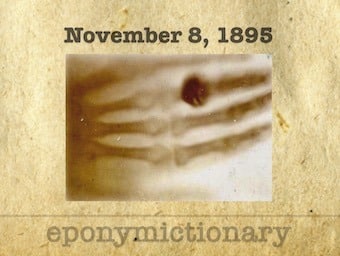
November 8, 1895
On November 8, 1895 Wilhelm Röntgen, chair of physics at Würzburg, noted an unusual phenomenon, that would change the world of medicine

On November 8, 1895 Wilhelm Röntgen, chair of physics at Würzburg, noted an unusual phenomenon, that would change the world of medicine

Hypothesis: Women are underrepresented in the realm of medical eponyms. Deep dive into eponymythology, and the roiling ocean of gender imbalance.
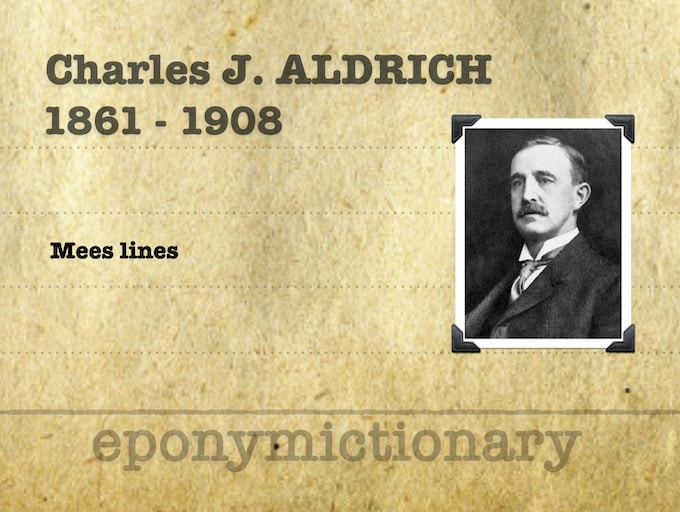
Charles John Aldrich (1861-1908) American neurologist. Provided early description of Mees lines he termed 'Leuconychia striata arsenicalis transversus'
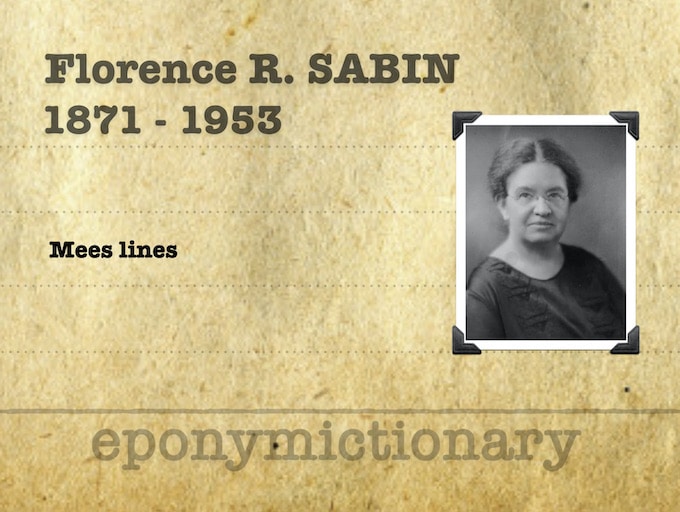
Florence Rena Sabin (1871-1953) American anatomist and medical researcher. Early description (1900) of Mees lines of the fingernails secondary to arsenic poisoning

Internet Archive founder, Brewster Kahle, reflects back on the most surprising advancement of his early innovation, the Wayback Machine.

Peter Beighton OMB, MD PhD, FRCP . Professor of Medical Genetics, University of Cape Town, South Africa. Beighton Score (1971)

Ernest Septimus Reynolds (1861 - 1926) was an English physician. Early description of Mees lines, arsenic poisoning and the 'Epidemic of Peripheral Neuritis Amongst Beer Drinkers in Manchester and District'
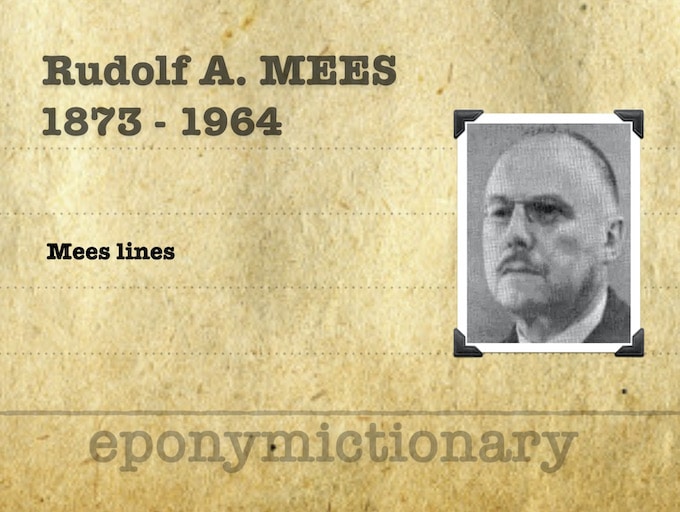
Rudolf Adriaan Mees (1873-1964) was a Dutch psychiatrist and physician. Described Mees lines in acute arsenic poisoning (1919)
Biography Medical Eponyms Major Publications References
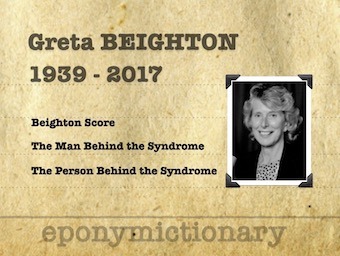
Greta Janet Beighton (1939 – 2017) was an English nurse and genetic researcher. Beighton score; Person behind the syndrome
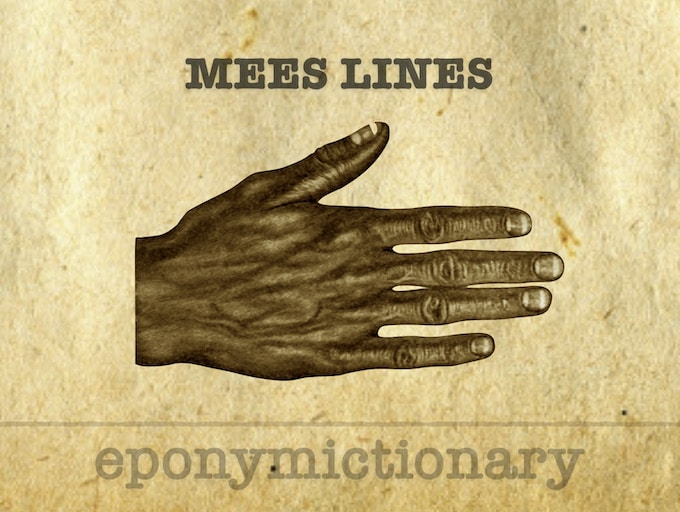
Mees lines: white bands traversing the full width of the nail, running parallel to the lunula, with no palpable ridges. As the nail grows they bands move distally and finally disappear when trimmed. The finding was initially related to acute arsenic poisoning.
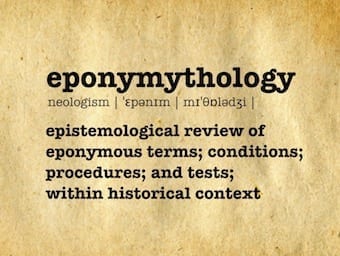
Artists and anatomy through history. Was Leonardo Da Vinci the first Anatomist?